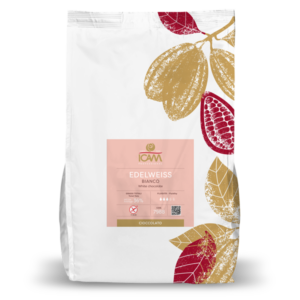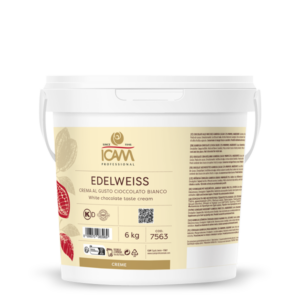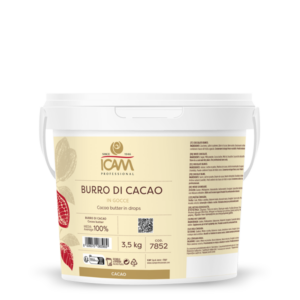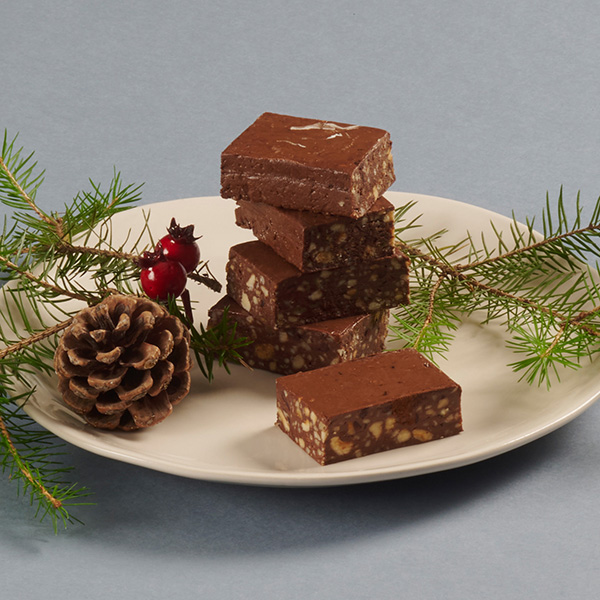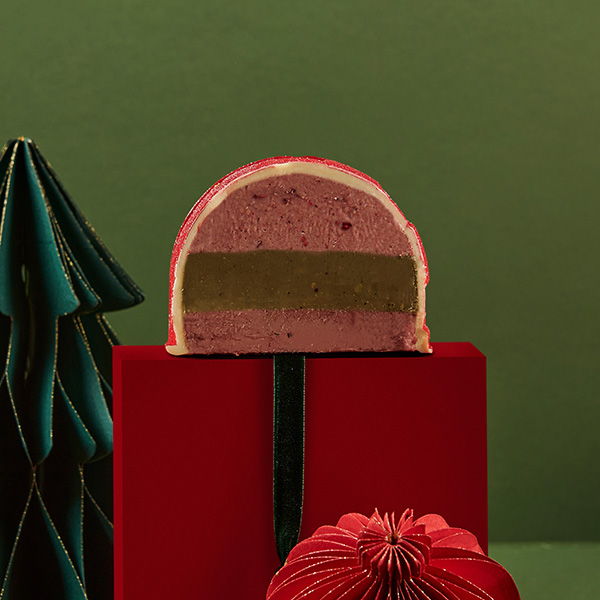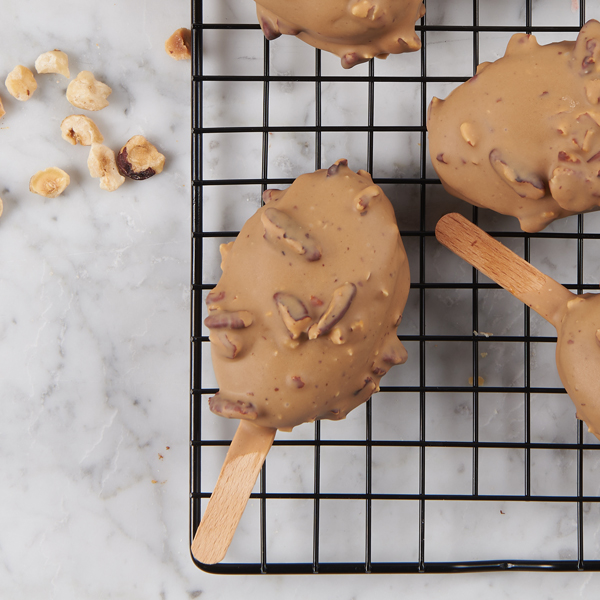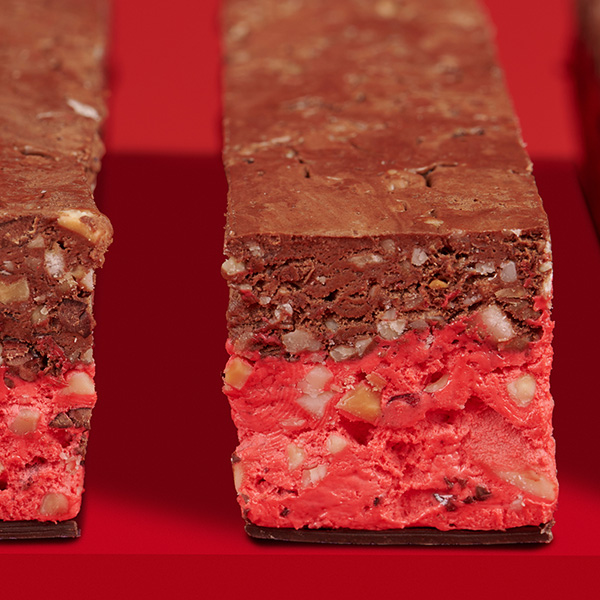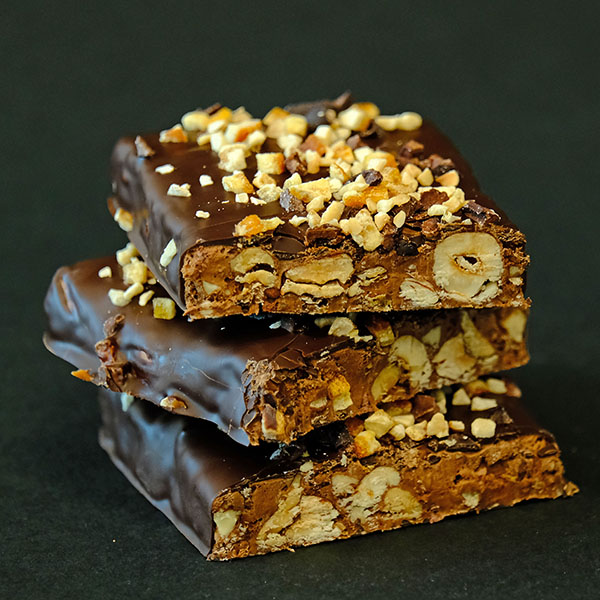
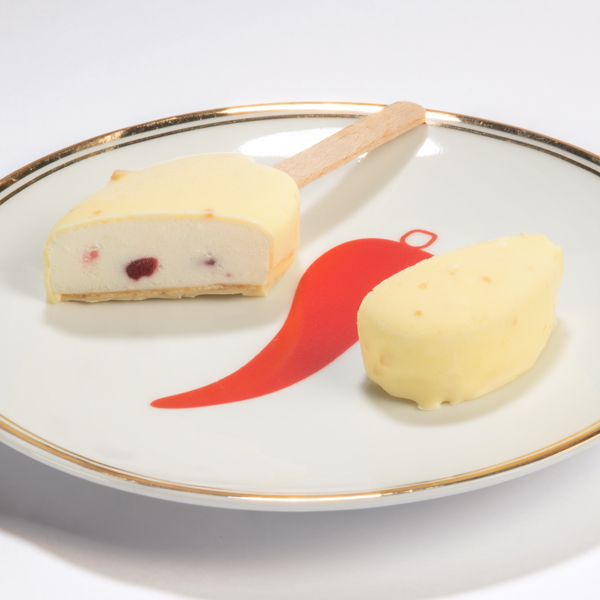
| 100 g | Biscuit flour |
| 100 g | Almond flour |
| 100 g | Sugar |
| 100 g | Butter |
| 2 g | Salt |
Mix all the ingredients together and bake for 15 minutes at a temperature of around 150°-160°C.
| 100 g | Tangerine Crumble |
| 20 g | Edelweiss White Chocolate |
| 30 g | Edelweiss White Cream |
Melt the Edelweiss White Chocolate with the Edelweiss White Chocolate Cream and then add it to the crumble. Roll it out to a thickness of 2mm between two sheets of baking paper, then cut out to the shape and size required. Chill.
| 210 g | Raspberry Puree |
| 65 g | Sugar |
| 35 g | Glucose Syrup |
| 7 g | Inverse Pectin |
Heat the fruit puree, glucose and 50g of sugar to around 40°C. Add the rest of the sugar mixed with pectin and cook until reaching the required thickness.
| 300 g | Egg whites |
| 600 g | Sugar |
| 200 g | Water |
While the egg whites are being beaten, boil the water the ginger at a temperature of 121°C. Next, pour the decocted liquid onto the egg whites and continue to beat until completely cool.
| 150 g | Spreadable cheese |
| 150 g | Baked meringue |
| 200 g | Semi-whipped cream |
Mix the cheese with the meringue. Carefully incorporate the lucid cream.
| 500 g | Edelweiss White Chocolate |
| 100 g | Cocoa butter drops |
| QB | Tangerine Crumble |
Separately melt the Cocoa Butter and the Edelweiss White Chocolate at a temperature of 45°C, and then amalgamate. Add the crumble. Use straight away of heat to a temperature of between 25/28°C.
Place the stick into the silicon mould. Prepare the semifreddo with a pastry bag and a number 3 nozzle. Finally, add the raspberry gelée to the centre. Lay the white chocolate crunch onto the surface. Chill, turn out the mould and glaze with white chocolate.
Cheesecake
- Cooked in bain marie to provide a homogeneous and constant cook.
- Use of a cake tin with a closed base.
- Don’t incorporate too much air whilst preparing the mixture to prevent it expanding too much during the cooking process.
- This would add the risk of the dessert collapsing upon itself during the cooling process.
- Place some baking paper around the edges of the cake tin to make the removal of the dessert easier.
- Further cooking should take place in the oven at a low temperature; anything over 110°C would damage the structure of the dessert.
Cold Cheesecake
- When making the meringue, the cooked sugar should be added to the egg whites as soon as they have been whisked to around 70% of their structure, otherwise the egg whites could become grainy.
- When using pectin in raspberry jelly, premix it with sugar, and add it to the pulp when it reaches a temperature of 40°C to avoid clumps of pectin forming. The jelly shouldn’t be too hot, 40°C at the most. To understand when the correct density of jelly has been reached, place a drop onto the work surface. If the droplet remains spherical then it’s ready.
- In the strawberry gelatine (this fruit is sensitive to heat), it is preferable to use sheets of animal-based gelatine for thickening, because if the temperature exceeds 40°C then we’ll have the sensation of cooked fruit and the colour becomes darker.
- The creamy cheese must be used at a temperature of around 27/28°C, otherwise clumps could form when adding the gelatine.
- When we use animal-based gelatine, in order to achieve a standard level of rehydration it is necessary to consider that 1g of gelatine absorbs 5g of water (five times its weight).
- The choc-ice version was made by using a semifreddo instead of a mousse in order to make it as similar to a cheesecake ice cream as possible.
- In the mousse version, we added a stabiliser (animal-based gelatine) that allows it to keep its structure in temperatures above zero. There is no stabiliser in the ice cream version, so consumption should take place while its temperature is still below zero.


